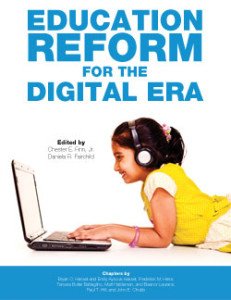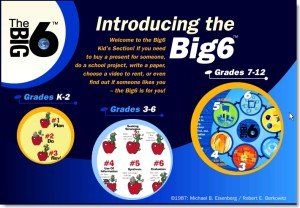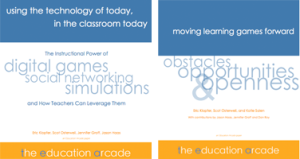K-12 Education Restructuring
OVERVIEW
Educational reform and restructuring make information literacy skills a necessity as students seek to construct their own knowledge and create their own understandings. Today instruction methods have changed drastically from the mostly one-directional teacher-student model, to a more collaborative approach where the students themselves feel empowered. Much of this challenge is now being formed by the AASL and more recently by the new Common Core School Standard that are now being developed.
Within the K-12 environment, effective curriculum development is vital to imparting “information literacy skills” to students. Given the already heavy load on students, efforts must be made to avoid curriculum overload. Adopting a collaborative approach to curriculum development among classroom teachers, librarians, technology teachers, and other educators is strongly recommends. Staff must be encouraged to work together to analyze student curriculum needs, develop a broad instruction plan, set information literacy goals, and design specific unit and lesson plans that integrate the information skills and classroom content. These educators can also collaborate on teaching and assessment duties.
curriculum overload. Adopting a collaborative approach to curriculum development among classroom teachers, librarians, technology teachers, and other educators is strongly recommends. Staff must be encouraged to work together to analyze student curriculum needs, develop a broad instruction plan, set information literacy goals, and design specific unit and lesson plans that integrate the information skills and classroom content. These educators can also collaborate on teaching and assessment duties.
Educators are selecting various forms of resource-based learning (authentic learning, problem-based learning and work-based learning) to help students focus on the process and to help students learn from the content. Information literacy skills are necessary components of each. Within a school setting, it is very important that a students’ specific needs as well as the situational context be kept in mind when selecting topics for integrated information literacy skills instruction. The primary goal should be to provide frequent opportunities for students to learn and practice information problem solving. To this extent, it is also vital to facilitate repetition of information seeking actions and behavior. The importance of repetition in information literacy lesson plans cannot be underscored, since we tend to learn through repetition. A students’ proficiency will improve over time if they are afforded regular opportunities to learn and to apply the skills they have learnt. (see K-12 Learning and Teaching Platforms)
The process approach to education is requiring new forms of student assessment. Students demonstrate their skills, assess their own learning, and evaluate the processes by which this learning has been achieved by preparing portfolios, learning and research logs, and using rubrics.
EFFORTS IN K-12 INFORMATION LITERACY
Information literacy efforts are underway on individual, local, and regional bases. Many states have either fully adopted AASL information literacy standards or have adapted them to suit their needs. States such as Oregon increasing rely on these guidelines for curriculum development and setting information literacy goals. Virginia, on the other hand, chose to undertake a comprehensive review,  involving all relevant stakeholders and formulate its own guidelines and standards for information literacy. The Common Core State Standards have taken the AASL standards and continued the evolution in literacy and testing.
involving all relevant stakeholders and formulate its own guidelines and standards for information literacy. The Common Core State Standards have taken the AASL standards and continued the evolution in literacy and testing.
Another immensely popular approach to imparting information literacy is the Big6 set of skills. The Big6 is thought to be the most widely used model in K-12 education. This set of skills seeks to articulate the entire information seeking life cycle. The Big6 is made up of six major stages and two sub-stages under each major stage. It defines the six steps as being:
- Task definition
- Information seeking strategies
- Location and access
- Use of information
- Synthesis
- Evaluation
Such approaches seek to cover the full range of information problem-solving actions that a person would normally undertake, when faced with an information problem or with making a decision based on available resources.
Imaginative Web based information literacy tutorials such as TILT are being created and integrated with curriculum areas, or being used for staff development purposes.
Library media programs are fostering information literacy by integrating the presentation of information literacy skills with curriculum at all grade levels. But information literacy efforts are not being limited to the library field, but are also being employed by regional educational consortia.
CLASS TIME AND SCHOOL REFORM
(The follow is an abstract from “Games for a Digital Age” (see: Educational Game eLearning/articles)
 The most important factor in the failure to achieve scale for long-form supplements had to do with trying to fit them into an unaccommodating school structure. Many supplements don’t work in a classroom because they need to be a more flexible product that could retain success in a variety of contexts. The flexible robust-design approach has intrinsic limits:
The most important factor in the failure to achieve scale for long-form supplements had to do with trying to fit them into an unaccommodating school structure. Many supplements don’t work in a classroom because they need to be a more flexible product that could retain success in a variety of contexts. The flexible robust-design approach has intrinsic limits:
Some essential conditions that affect the success of an educational innovation cannot be remediated through ruggedizing. Further, in the shadow of high stakes testing and accountability measures mandated by the federal No Child Left Behind legislation, persuading schools to make available multiple weeks of curricular time for a single intervention is very hard.
The MIT Education Arcade has found that their long-form immersive games are not being adopted easily into the schools because of the time factor. Recently the Arcade has been working on math and biology games for mobile devices that are designed to be played for 1 to 3 minutes a dozen times a day. These games are being developed in reaction to limited classroom time, limited access to technology, and the rise of mobile and tablet devices in the classroom.
Some feel that eventually long-form supplements will bring about changes in the organization of the school day to provide for in-depth, longer-form activities such as immersive games. The successful reading intervention program Read 180 from Scholastic, Inc. that combines whole group and small group instruction with adaptive software requires a 90-minute time block and has been implemented in schools that have adjusted their time blocks to accommodate the program.
 However, Read 180 is a research-proven reading intervention product serving a critical need. Examples of schools shifting the structure of the school day to accommodate a new technology program are rare. Ultimately, games that fit into a discrete school period have a higher chance of success, while longer games have yet to gain acceptance. It is clear that changes in the basic organization of the school day and the relationship between classroom time and homework are still a long way off. Most teachers will continue bending the technology to fit their needs rather than the other way around.
However, Read 180 is a research-proven reading intervention product serving a critical need. Examples of schools shifting the structure of the school day to accommodate a new technology program are rare. Ultimately, games that fit into a discrete school period have a higher chance of success, while longer games have yet to gain acceptance. It is clear that changes in the basic organization of the school day and the relationship between classroom time and homework are still a long way off. Most teachers will continue bending the technology to fit their needs rather than the other way around.
James Gee enunciates a dozen principles of learning built into good games that could and should be applied to school learning. “If implemented in schools they would necessitate significant changes in the structure and nature of formal schooling as we have long known it.” Gee’s recent keynote address to the 2012 Games for Change Annual Conference goes further in re-defining the changes that will be needed in how classroom time is managed in the next wave of education reform.
Such challenges to achieving scale have resulted in bringing the research-funded gaming community in line with other efforts to reform public schools. Even though school reform requires a long-term effort there is significant interest by the research, foundation, and government communities to make reform possible.

Recent Comments